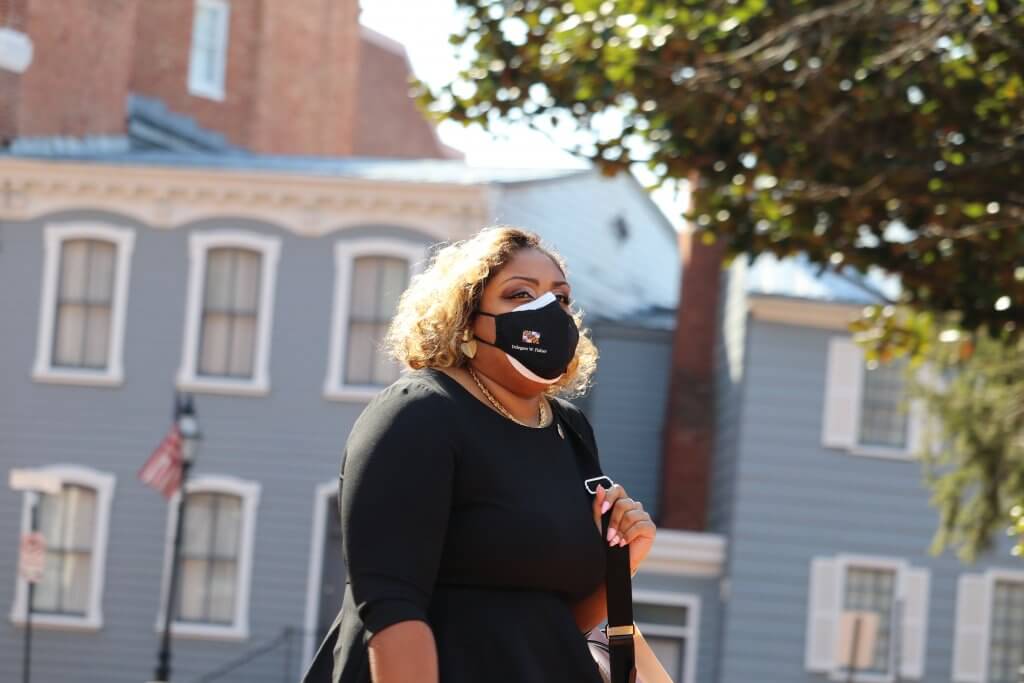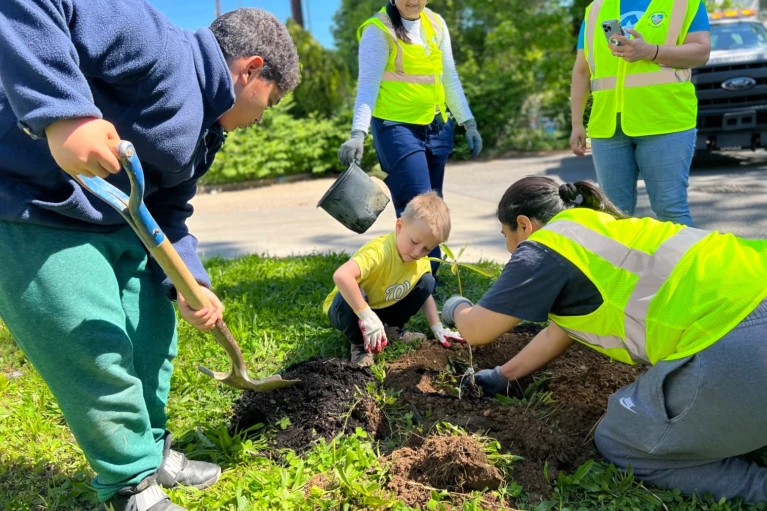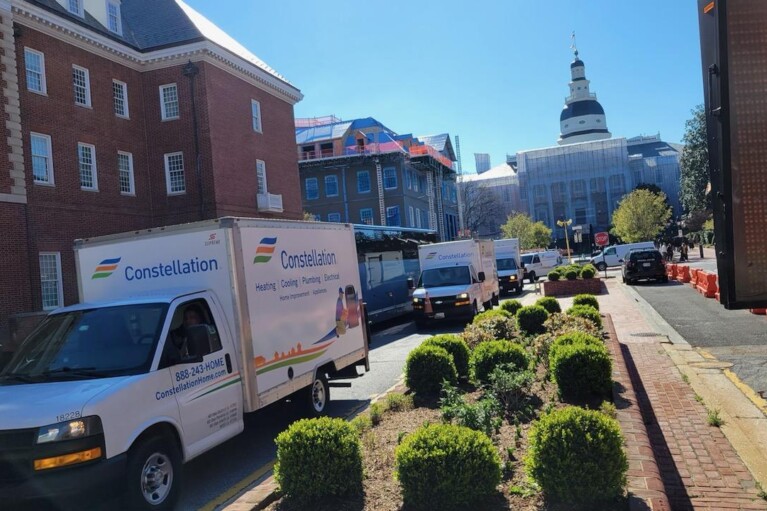Supporters Launch a Renewed Push for Environmental Human Rights Amendment

The push to recognize an inalienable human right to a healthy environment is not new, but it has yet to gain major steam.
As election year approaches, environmental advocates in Maryland are confident that a state constitutional amendment to guarantee the right to a healthy environment will receive renewed attention and vigor in the next legislative session.
For the past three years, Maryland state lawmakers have introduced so-called “green amendments,” but they never made it out of committee. Most recently, Del. Wanika Fisher (D-Prince George’s) sponsored a bill last legislative session, which would have placed the right to a healthy environment under constitutional protection.
She is planning to reintroduce the measure come January.
“I don’t think it failed because people didn’t want it — I think we have a lot going on,” Fisher said, referencing the COVID-19 pandemic and police reforms that demanded lawmakers’ attention last session. “I’m confident that this bill is going to get great attention [next year]. People want to see it on the ballot in November,” said Fisher, who has asthma and represents a district in Prince George’s County where the majority of residents are Black or Hispanic and live near industrial plants.
If the bill receives a three-fifths vote in both houses of the Maryland General Assembly and is approved by voters on the ballot next November, the Maryland Constitution would be amended to say that “each person, as a matter of human dignity, has the fundamental and inalienable right to a healthful environment.”
“Sometimes, it takes a while for something to sink in, and I think the newness of the idea — that this is not a granular bill but a fundamental right — just needed to sink in,” said Nina Cardin, the co-founder of the Maryland Campaign for Environmental Human Rights. “When we started [campaigning for a green amendment], the environment was still seen as somewhat a marginal issue, but it is increasingly being understood as foundational to everything else that we do,” she said.
Growing Push for A Green Amendment
This renewed push for a green amendment in Maryland comes after New York voters approved their own earlier this month. At least two other states, Pennsylvania and Montana, recognize environmental rights in their state constitutions.
In Pennsylvania, the amendment was critical in preventing the state legislature from overriding a town’s ability to limit fracking within its boundaries in 2016. Last month, the United Nations Human Rights Council voted to adopt a resolution recognizing the human right to a safe environment.
Supporters of a green amendment say that it would give Marylanders an additional cause of action in courts and place legal power in the hands of individuals, especially those who have borne disproportionate health impacts from pollution and environmental degradation, to ensure that government entities are acting as good environmental stewards.
Because the amendment is written broadly, it could be used to cover various environmental issues and fill in the gaps and loopholes in Maryland’s existing laws, said Katlyn Schmitt, a policy analyst for Center for Progressive Reform.
Opponents have assailed an environmental human rights amendment for potentially inducing a floodgate of litigation, but advocates say that this has not happened in other states that already have this amendment.
Rather, lawsuits will most likely be reserved for the most egregious acts, advocates said. And it might just take one court case for the state to realize the teeth and bounds of an environmental rights amendment rather than requiring a lawsuit every time an environmental injustice occurs, Schmitt said.
Monica Brooks said such an amendment may have helped her a few years ago, when she found out that a new 13-house poultry complex, or concentrated animal feeding operation (CAFO), was proposed near her home in Salisbury.
She launched Concerned Citizens Against Industrial CAFOs and after three years of advocacy, the project was scrapped. But Brooks said it may not have been such an uphill battle with harassment from neighbors if the state constitution included a right to a healthy environment.
“If we had that amendment, I believe that we would have had the influence and backing we needed,” Brooks said. “These fights that we had to continually do — explaining why we need to protect our source of water, why we need to protect our air quality — we wouldn’t have had to do any of that.”
“I’ve been in the trenches and I have seen the ridiculousness of trying to convince people that [a clean environment] is a basic human dignity,” Brooks continued.
The cases filed by Brooks and others faced long odds in court because the poultry company owners already had a permit from the Maryland Department of the Environment. “We didn’t have a leg to stand on,” Brooks said, but they managed to delay the project.
Had a green amendment existed, the case may have had a more significant impact and possibly changed how state permits for CAFOs are issued. The amendment also could have served as an extra layer of protection, by sending a message to polluters that a clean environment is a priority for the state, Brooks said.
A green amendment could also act as a preventative measure by changing the government’s behavior and giving officials pause when they create environmental regulations and issue permits, since they will have to uphold their obligation to ensure a healthy environment to all, said Rosa Hance, chair of the Maryland Sierra Club.
“I think it’s a game changer — it would shift the way that we do business in Maryland,” Hance said.
An environmental human rights amendment could also help highlight communities disproportionately impacted by environmental harms and possibly direct funding to address some of the “baked-in racism” in housing and development plans that led to environmental injustice in the first place, said Sacoby Wilson, an environmental health scientist at the University of Maryland.
Should the legislature or courts uphold environmental protection?
However, Del. Kumar Barve (D-Montgomery), the chair of the Environment and Transportation Committee, took issue with the amendment’s broad scope and the opportunities it created for more lawsuits.
Barve said he thinks an amendment could give people the right to bring lawsuits to stop offshore wind turbines and community solar by arguing that it hindered their “aesthetic enjoyment of the environment.”
“We simply cannot create a cause of action to allow people to…slow down renewable energy development,” Barve said. “I’m not prepared to take that risk.”
Barve also expressed doubt in the amendment’s ability to affect change. “Pennsylvania has an amendment like this on the books, yet they have fracking and we don’t. So, what good is it?” he asked.
And Barve took exception to the fact that such an amendment would take away the legislature’s right to craft environmental laws and instead give it to the courts.
“It’s better to have environmental regulations and enforcement handled by the executive and legislative branches of government, rather than the court system and juries decide these things because these are complex issues that are not absolutist in their nature,” Barve said.
But all branches of the government are meant to interact, Fisher said. The General Assembly can pass environmental bills all day long, but they do not get to execute them, she said. “It’s about the way it’s executed, which lies in the executive office. Then who makes the decision on whether the law [was] executed right or wrong? — our judiciary system,” Fisher said.
It is difficult to prepare to pass laws for every single environmental harm that can take place in Maryland, and so the courts are the appropriate place to provide additional environmental protections because the legislature can’t do it all, Schmitt echoed.
There is a difference between regulations, which address a particular issue, and a right, which is all encompassing, Fisher said. A green amendment would “create a structure in which people’s environmental rights need to be taken into consideration,” Fisher said.
In other words, government agencies and businesses are going to have to consider the fact that they can be vulnerable to a lawsuit if they don’t consider people’s rights to a healthy environment, she continued.
But the amendment is not the “be all and end all,” Cardin said.
“The amendment is the bedrock,” Cardin said. “Once passed, it will be a jumping off point, a platform, upon which additional laws and regulations will be able to be passed and existing laws and regulations will be [enforced] better.”
Editor’s note: This story has been edited to update the language of the proposed environmental human rights amendment.





 Creative Commons Attribution
Creative Commons Attribution